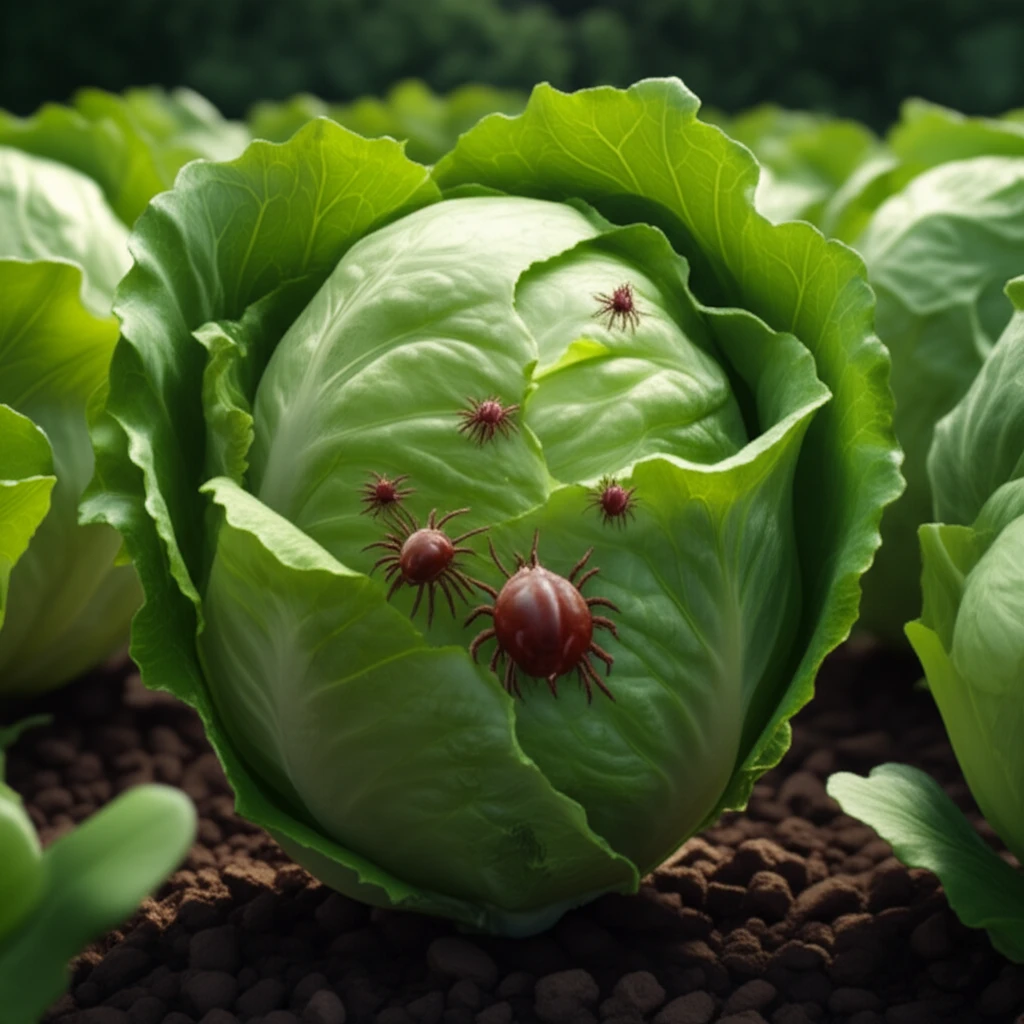
Lettuce Power: Natural Mite Control in Your Garden?
"Discover how lettuce extracts could offer a safe, eco-friendly way to combat carmine spider mites and protect your plants."
Carmine spider mites are a common and destructive garden pest that attacks a wide range of plants, causing significant damage to crops and ornamentals. These tiny mites can quickly multiply, leading to leaf discoloration, stunted growth, and reduced yields. Traditional control methods often rely on synthetic acaricides, but concerns about resistance development, environmental impact, and potential harm to beneficial insects have spurred the search for safer alternatives.
Amidst growing interest in eco-friendly pest management, researchers have been investigating the potential of plant-based solutions. Many plants possess natural compounds with insecticidal or acaricidal properties, offering a more sustainable and environmentally responsible approach to pest control. These "phytogenic acaricides" are generally less toxic to mammals, break down more quickly in the environment, and can be effective against resistant mite populations.
A recent study has explored the acaricidal activity of lettuce (Lactuca sativa) extracts against carmine spider mites (Tetranychus cinnabarinus). The research investigates the effectiveness of different lettuce extracts in controlling these mites and identifies specific compounds responsible for their acaricidal properties. This article delves into the findings of this study, examining the potential of lettuce extracts as a novel, natural solution for mite control in gardens and greenhouses.
Unlocking Lettuce's Potential: How Extracts Combat Spider Mites

The study evaluated the acaricidal activity of lettuce extracts obtained from different plant parts (leaves, roots, and seeds) using various solvents (petroleum ether, acetone, and methanol). The extracts were tested against carmine spider mites using a slide-dip bioassay, a method that involves exposing mites to the extracts and observing their mortality rates. The researchers found that acetone extracts from lettuce leaves, particularly those harvested in July, exhibited the highest acaricidal activity.
- Acetone extracts of lettuce leaves showed the most promising acaricidal activity.
- Lettuce leaves harvested in July were more effective than those harvested in September.
- Specific fractions isolated from the acetone extracts exhibited high mite mortality rates.
A Greener Future: Lettuce Extracts as a Sustainable Solution
The study's findings suggest that acetone extracts of lettuce leaves, particularly those harvested in July, hold promise as a natural acaricide for controlling carmine spider mites. The identification of β-sitosterol as an active component further supports the potential of lettuce-derived compounds in pest management. This approach offers a more sustainable and environmentally friendly alternative to synthetic acaricides, reducing the risk of resistance development and minimizing harm to beneficial organisms.
While the laboratory results are encouraging, further research is needed to evaluate the effectiveness of lettuce extracts under field conditions. Factors such as environmental conditions, application methods, and the specific lettuce variety used may influence the acaricidal activity. Additionally, further investigation is warranted to fully elucidate the mechanisms by which β-sitosterol and other lettuce-derived compounds exert their acaricidal effects.
In conclusion, this research highlights the potential of lettuce extracts as a novel, phytogenic acaricide for mite control. By harnessing the natural defenses of plants like lettuce, we can develop more sustainable and environmentally responsible pest management strategies, promoting healthier gardens and a greener future.
